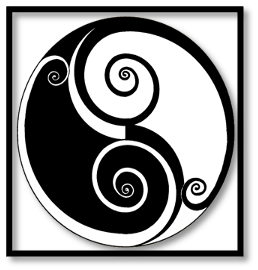Whatever therapeutic tool is used such as body language, imagination, verbalizing or dreaming is an essential part of therapy action. The client is encouraged to allow himself to be or act about the actions, feelings, or persons involved in the polarities that are in the focus, in a relatively safe environment where he can take risks and gain support.
Orientation in the present
Therapy is done in the now, maintaining a continuum of awareness, revealing and becoming fully aware of every current experience. If the client can stay with that experience, after a short time he will overcome it even if it is unpleasant. The therapist helps the person to live his feelings, instead of talking about them. There are two ways through which we can guide the client to awareness.
One could be through an open request to the client to try to express what comes into his current field of awareness. Mostly it goes through giving an instruction to “stop” thinking at the given moment, in addition to pure self-observation.
The other way involves bringing up some past or future event, fantasy or dream in the present tense. This allows to identify or to get rid of that content by re-performing it. The therapist focuses on “what” and “how”, not on “why” questions. Through this awareness of the moment is promoted. Questions like “what’s happening now” or “what are you feeling right now” are used to intensify the experience at the present moment. The questions “why” only lead to rationalization and “self-deception” and only distance from the immediacy of the moment.
Dialogue with an empty chair
This is a technique for amplifying what is at the edge of awareness, for exploration of polarities, projections, introjections. Through the empty chair experiment the client psychologically separates from himself some aspect of himself or his world, which is not clear to him. He addresses him, imagining that aspect in the void a chair or somewhere else in the space. The dialogue with the unclear part can bring insight and clarity and reappropriation of the alienated qualities. It helps the client get back in touch with those aspects from the self. The empty chair is one way of exploring the impasse in the topdog-underdog conflict (a metaphor for a typical struggle between the introject and the resistance to it) where “should or should” is placed on one chair to the topdog, and to another “what I want” and the needs of the underdog. Beneficial outcome is a mutual softening of the two parts, each of them realizing the benefit of the other and reconciling the conflicting sides of his experience.
Amplification
It assumes reinforcement of a certain movement, speech, behavior, because our inner experience is often shown through body language and dancing. It is often used in situations where there is confusion of needs and thoughts. The client may not be aware of the truth of the statement until with reinforcement he did not bring the inner experience into focus. The feelings can emerge more clearly with this kind of experiment.
Reversal
Since polarities are always present, this technique brings it out the existence of both extreme points. It is especially useful in situations where the client is stuck at one end of the emergent quality continuum. The technique involves suggesting the client say or do the opposite as an experiment, that is, the other quality of this polarity. It might be useful for awakening awareness of the essential ingredients in closing the gestalt.
A trial
It involves trying out to speak different sentences in an attempt to find clarity in confusion. Sometimes the client becomes aware of the truth about his own experience through speech. In dealing with clients where self-support is still not strong enough, and they have catastrophic expectations or fantasies, it could be of great help, in order to make a certain change, speaking out loud, with the addition of contact with reality.
Stating the obvious
Often, deep structures and processes show up in the first expression of the client or in the obvious body movements. The therapist exposes the client to the obvious from what he notices in the client behavior or body posture, for example: “Are you aware about the stiffness in the back posture? “
Experiments on directed awareness Contact is an essential ingredient in the therapeutic process, contact with the inner experience and with the experiences of the external world. We give to the client an instruction to focus on inner experience, different bodily attitudes, sensations in the body or feelings, attention to what he says and invite him to notice how his thoughts and feelings are manifested in his body.
Staying with the feeling
It implies a proposal to the client to do nothing, that is, to stay with the experience of feeling, for example feeling of stuckness or powerlessness.
Guided visualizations
The client closes his eyes and follows the instructions of the therapist. They are usually oriented on bodily sensations or emotions and experiences. By imagining these experiences, the client is able to become aware of his inner world, experience, memory, sensation. This can help the therapeutic process of the client.

